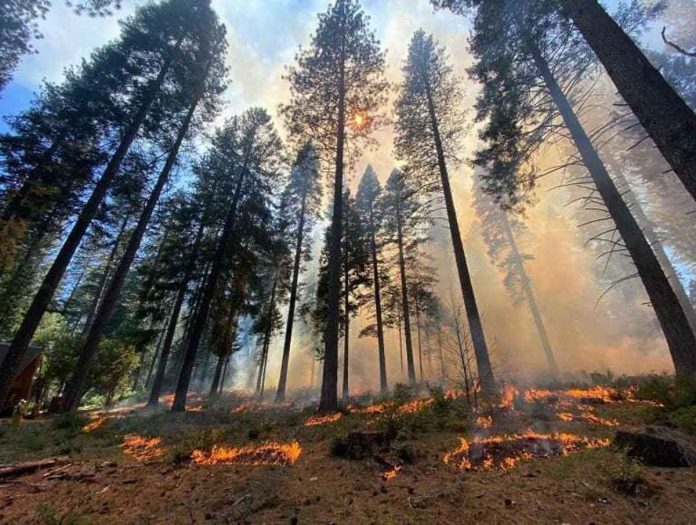Human-caused wildfires in California are more destructive than lightning-sparked flames, according to a study published recently in the journal Nature Communications by a team led by scientists from the University of California, Irvine. The findings could aid scientists in better understanding the intensity of fires and how likely they are to kill trees and cause long-term damage to ecosystems in their path.
Wildfires are nothing new in California; over 4 million acres burned across the state in 2020, including the million-acre August Complex Fire. But until now, it was unknown whether there was a difference in severity between wildfires started spontaneously by lightning strikes and those started by humans.
“Human-caused fires grow faster and release more energy as they spread because they’re commonly started in hotter and drier circumstances,” said James Randerson, a co-author of the study and the Ralph J. and Carol M. Cicerone Professor of Earth system science at UCI. “They’re a lot more vicious.”
Lightning-strike fires, on the other hand, are more likely to occur in conditions with higher humidity, which can limit flame intensity.
The research was made feasible by breakthroughs in fire modeling at UCI, which have allowed scientists to gain a better understanding of the processes that determine how quickly fires spread. In a separate new study published in Scientific Data, such advancements were outlined.
“We developed a fire tracking algorithm and used it to examine the location, energy, and spread of different types of flames over the past nine fire seasons in California,” Yang Chen, an assistant researcher in the Department of Earth System Science, stated.
Chen and colleagues used imaging equipment on the National Oceanic and Atmospheric Administration’s Suomi satellite to look at thermal hotspots from fire activity in order to develop their method. This enables for near-real-time wildfire surveillance and simulation.
“In the past, these types of data were available for specific fires,” Randerson said. “However, it hasn’t been structured in a systematic way, and it hasn’t been made available across all of a region’s fires. This is where the new product comes in handy. It allows us to see where the fires burn the fastest in California and how that links to the weather and vegetation in that area.”
This two-study effort was also one of the first to link a fire’s pace and energy release to its long-term consequences on ecosystems, which can endure decades or even centuries. “The significance of this algorithm is that it could help us to create better fire models in California and track wildfires in places of the world where we don’t have aeroplanes and multiple satellite sensors measuring fires around the clock,” Randerson explained. “As a result, this could be useful for understanding fire behaviour in isolated boreal forests and tropical forest understory.”
Both studies are particularly relevant to California, where increasing fire severity is resulting in increased property loss, civilian and firefighter deaths, ecosystem destruction, and poor air quality. Animations of the new data for the Caldor and Dixie fires were made by co-author Douglas Morton and visualisation engineer Cynthia Starr from NASA’s Goddard Space Flight Center. Several California settlements in the Sierra Nevada mountains were devastated by these two flames during the wildfire season of 2021. These flames’ data visualisations show how quickly fire behaviour can alter due to day-to-day weather variations and fires moving into new areas with varying levels of fuel accumulation.
Researchers from NASA’s Goddard Space Flight Center, Colombia’s Universidad del Rosario, and the United Kingdom’s Cardiff University contributed to the two investigations.

